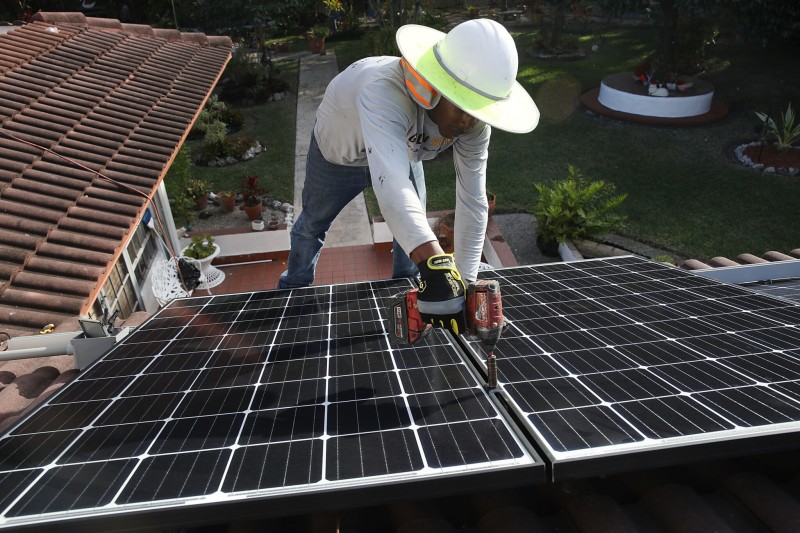
Roger Garbey, from the Goldin Solar company, installs a solar panel system on the roof of a home on Jan. 23, 2018 in Palmetto Bay, Florida. Credit: Joe Raedle/Getty Images
Last year, the median U.S. household with solar panel mounted rooftop had an income of $110,000, which is nearly double the $63,000 median for all households. The difference shows that the benefits of solar continue to disproportionately go to wealthier households. But the gap has been shrinking.
The numbers come from the latest edition of a long-term study by Lawrence Berkeley National Laboratory, with a trend that hasn’t changed much from previous editions: Solar is becoming more accessible, but the shift is gradual.
“Progress is good, but I’m not thrilled with the imperfect world of incremental progress,” said Stephen Campbell, senior manager of policy and business development for Grid Alternatives, an Oakland-based nonprofit that has a variety of solar power programs.
In 2010, the median income of households with solar was $129,000, according to the study. Access to solar panel mounted rooftop has improved thanks to reductions in the costs of solar systems and the growth of programs—including some run by Grid Alternatives—to help people with low and moderate incomes afford solar.
Like so many aspects of the transition to clean energy, the trend is moving in the right direction but not quickly enough. Rooftop solar is growing, but is not yet part of the mainstream in most of the country. Only about 3 percent of households have solar, a share that rises to 5 percent if we’re only looking at owner-occupied, single-family houses, according to the report’s co-authors.
The goal, Campbell said, should be for solar to be within reach of anyone who wants it. This is important because of the larger imperative to build as much renewable energy as is feasible, which includes big increases in solar panel mounted rooftop and utility-scale solar.